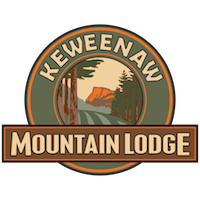The first full moon of 2024 rose on Thursday January 25th, the Wolf Moon.
This January’s Moonlit Snowshoe Hike on January 27th, corresponded with the annual Snowshoe Hare event which included multiple activities celebrating snowshoeing in the Keweenaw, and was under the Wolf Moon. The owners of Iverson Snowshoes, Jim and Victoria Baker, treated participants with the opportunity to walk in the snow with traditional wood snowshoes made by Iverson. In the morning, a guided exploration on snowshoes was offered by naturalist Tom Oliver with MTU’s Center for Science and Environmental Outreach. After working up an appetite on the trails, folks could try a bowl of rabbit stew or other rustic worldly food items from the Little Cabin Cafe. In the afternoon, guests observed presentations about the History of Snowshoeing, Snowshoe Hare Ecology and even learned how to lace traditional snowshoes.
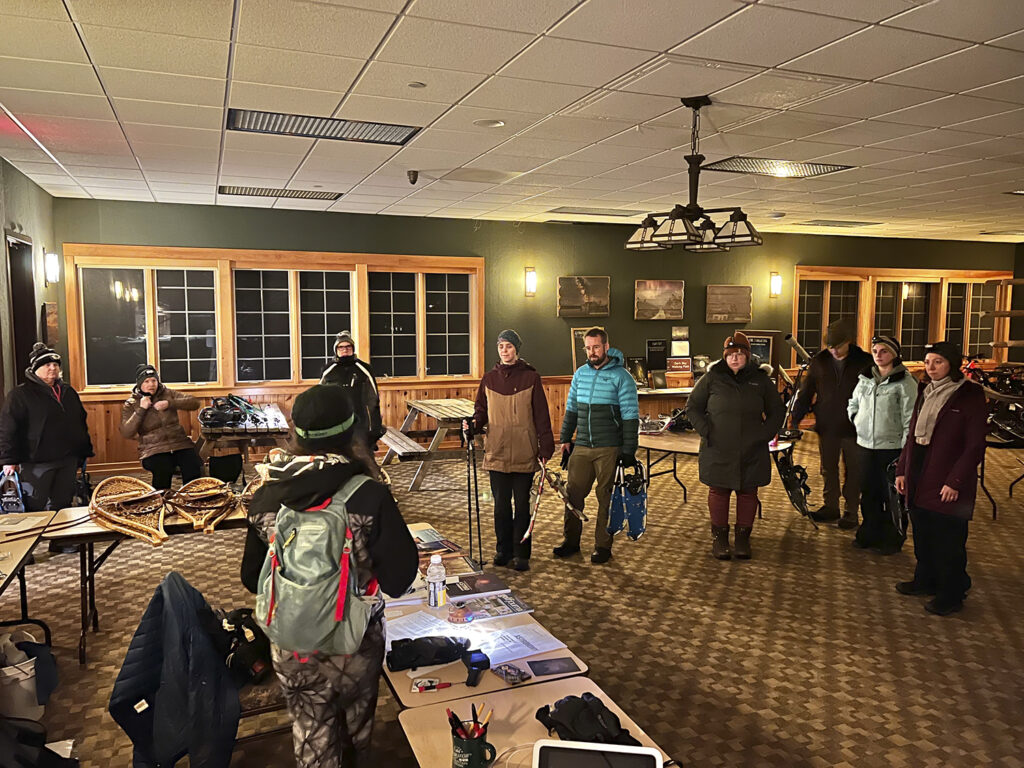
As night time approached and the skies turned to dark, we hoped for a full moon to light our adventures on the Moonlit Snowshoe Hike. Typically January in the Keweenaw brings cold temperatures and endless snow to cover the winter paths. The colder temperatures sometimes help keep the night skies clear and the continuous fresh snow light and fluffy. However, being an outdoor enthusiast and hobbyist skywatcher, I have learned that the word “typical” may not be a dependable tool for planning our adventures. Sometimes the weather can be uncooperative, and that was the case this evening. Moonlight and fresh snow amiss; the adventurers hiked on.
To many individuals, full moons are one of the most dramatic sights in the night sky. Every month, Earth’s moon goes through its phases, waning and waxing in its constant transformation from new moon to full moon and back again. Full moons occur approximately 29.5 days as the moon moves to the side of Earth directly opposite the sun, reflecting the sun’s rays off its full face and appearing as a brilliant, perfectly circular disk.
For millennia, humans have used the movement of the moon to keep track of the passing year and set schedules for hunting, planting, and harvesting. Ancient cultures and Native Americans have given these full moons names based on the behavior of the plants, animals, or weather during that month. Although many Native American tribes gave distinct names to the full moons, the most widely accepted names come from the Algonquin tribes who lived in the area of New England and westward to Lake Superior.
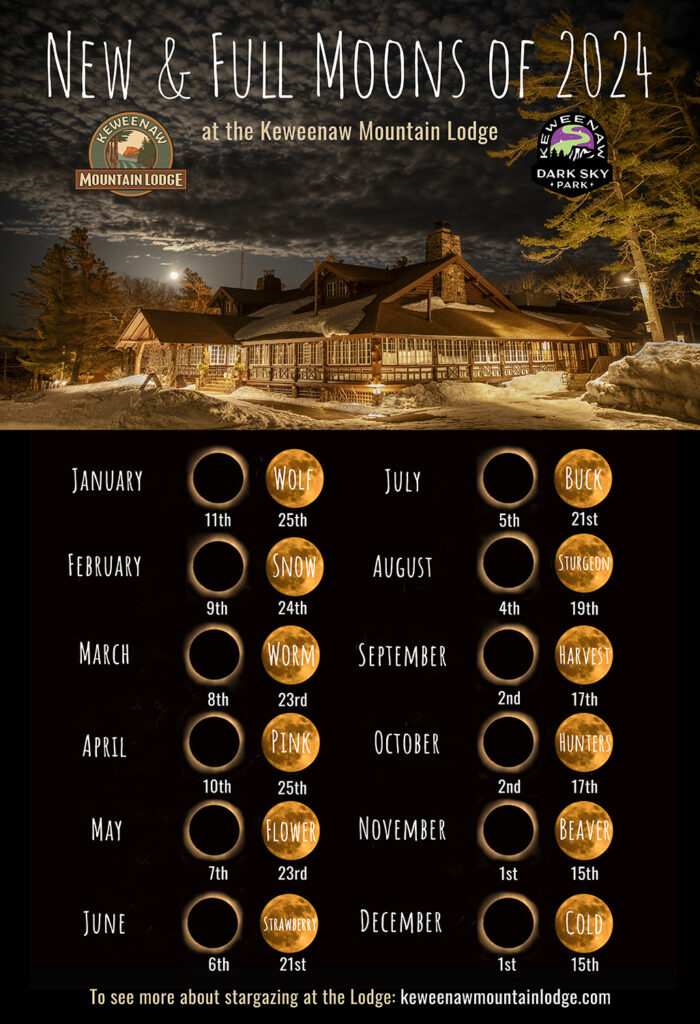
One of the names that January’s full moon carries is Wolf Moon. It was thought that the wolves howled in hunger as they lamented over the scarcity of food midwinter. Perhaps more accurately though, howling and other wolf vocalizations are heard more clearly in the wintertime and are used to locate pack members, reinforce social bonds, define territory and coordinate hunts. The eerie sounds of resident coyotes and local wolf packs have recently been filling the nights in Copper Harbor. This possibly unfamiliar sound to visitors may create chills and even seem unnatural. However it may be one the purest forms of nature and the natural world. Oftentimes, this wild communication conjures up a connection between humans and wolves; a connection telling us we are part of this moment. The sound of howling may be a reminder that when hiking by traditional snowshoes under the blanket of darkness in the winter, that we too may not be far removed from our natural state. It has even been suggested that the Wolf Moon offers us greater opportunity for deep self-reflection.

During our adventure, the moon did not light our way and the wolves did not howl. In fact, the night was not typical, the temperatures were warmer than expected and the snowfall was less than average. Following the Keweenaw Mountain Lodge’s core value of, “Adapt accordingly to the situation and react in a positive manner” we welcomed the “non-typical” conditions.

While reflecting on the natural scene around me; I realized…maybe “typical”, “expectations” and “average” are not what we desire when we wander into the night seeking guidance by moonlight and the natural world.
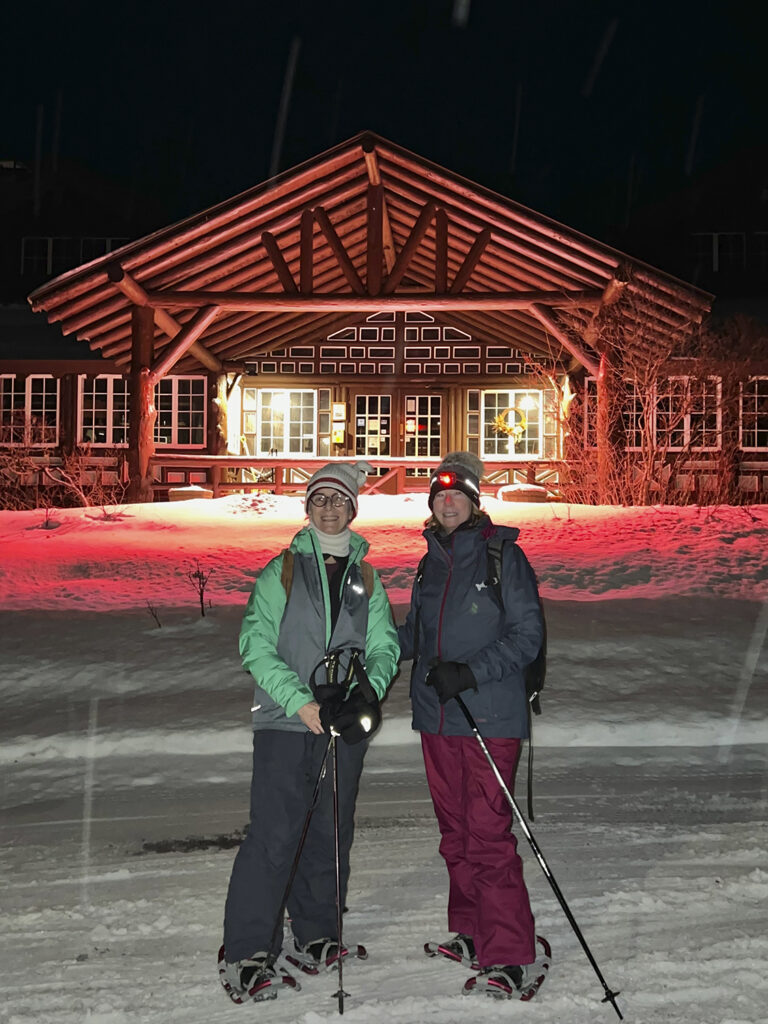
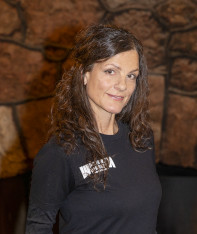
…

